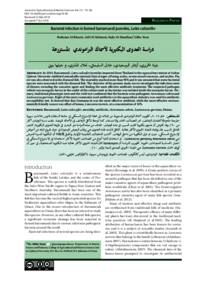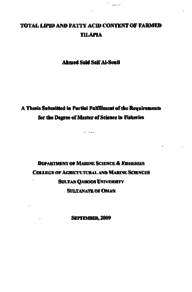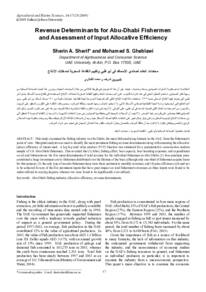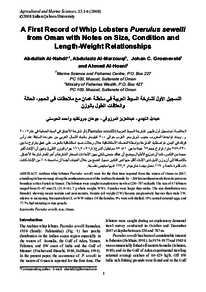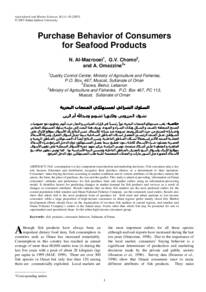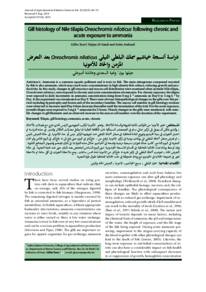Document
Bacterial infection in farmed barramundi juveniles, Lates calcarifer.
Contributors
Publisher
جامعة السلطان قابوس. كلية العلوم الزراعية والبحرية
Gregorian
2018
Language
English
Subject
English abstract
In 2016, Barramundi, Lates calcaifer juveniles imported from Thailand to the aquaculture station at Sultan Qaboos University exhibited remarkable external clinical signs of losing scales, severe muscle necrosis, and ascites. Fin rot was also observed in the diseased fish. The mortality reached more than 90% and it was assumed that some bacterial species were associated with the diseased fish. The objective of the present study was to investigate the infection route of disease, revealing the causative agent and finding the most effective antibiotic treatment. The suspected pathogen vehicle was mosquito larvae in the outlet of the culture tank as bacterium was isolated inside the mosquito larvae. Primary, traditional phenotypic tests and the vitek test confirmed that the bacteria were pathogenic Aeromonas sobria and Lactococcus garvieae. Eight of the most commonly used antibiotics in the aquaculture industry was used for antibiotic susceptibility test. It showed that that Gentamycin was the most effective antibiotic while the most effective environmentally friendly source was effort of henna, Lawsonia inermis, at a concentration of 10%.
Member of
ISSN
2410-1079
Resource URL
Citation
Al-Khaziriyah, B., Al-Sulimani, A., Al-Mandhariyah, N., & Yoon, G. (2018). Bacterial infection in farmed barramundi juveniles, Lates calcarifer. Agricultural and Marian Sciences Journal, 23 (1), 76-80.
Arabic abstract
عام 2016، أظهرت أسماك البراموندي المستوردة من تايلاند إلى محطة الاستزراع السمكي في جامعة السلطان قابوس علامات سريرية خارجية ملحوظة كفقدان الزعانف، نخر العضلات الحاد، والاستسقاء. كما لوحظ تآكل الزعانف في الأسماك المريضة. بلغت نسبة الوفيات أكثر من 90% وقد أفترض أن عدوى بكتيرية كانت السبب في هذه الوفيات. الهدف من هذه الدراسة هو البحث في طريقة العدوى البكتيرية، كشف العامل المسبب لها، وإيجاد المضاد الحيوي الأكثر فعالية. الناقل المشتبه لهذه العدوى هي يرقات البعوض الموجودة في خزان تفريغ المياه من أحواض الاستزراع السمكي، حيث تم عزل البكتيريا من داخل اليرقات. أكدت التحليلات التقليدية الأولية، وتحليل vitek أن البكتيريا المسببة للمرض هي Lactococcus garvieae Aeromonas sobria. تم استخدام ثمانية أنواع من المضادات الحيوية الأكثر استخداما في الاستزراع السمكي في اختبار الحساسية للمضادات الحيوية. أظهرت الدراسة Gentamycin كان المضاد الحيوي الأكثر فعالية ضد البكتيريا المستخلصة، في حين أن أوراق الحناء Lawsonia inermis هي المضاد الحيوي الصديق للبيئة بتركيز 10%.
Category
Journal articles

